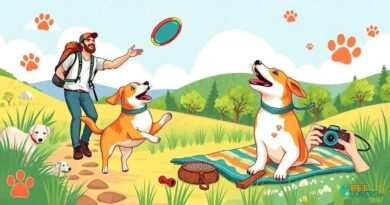What is Unwritten dog etiquette
Understanding Unwritten Dog Etiquette
Unwritten dog etiquette refers to the set of unspoken rules and social norms that govern interactions between dogs and their owners, as well as between dogs themselves. These guidelines help ensure that both humans and canines can coexist peacefully in shared spaces, such as parks, neighborhoods, and homes. Understanding these nuances is essential for every dog owner, as it fosters a harmonious environment for all.
Respecting Personal Space
One of the fundamental aspects of unwritten dog etiquette is respecting personal space. Just like humans, dogs have their own comfort zones. When approaching a dog, it is crucial to observe their body language. A dog that is backing away, growling, or showing signs of stress is communicating a need for space. Owners should teach their dogs to respect the boundaries of others, promoting a safer and more enjoyable experience for everyone involved.
Proper Greetings Between Dogs
When two dogs meet, the way they greet each other can set the tone for their interaction. Unwritten dog etiquette suggests that dogs should be allowed to sniff each other before any play begins. This sniffing is a natural behavior that helps dogs gather information about one another. Owners should ensure that their dogs are calm and well-behaved during these introductions to prevent any misunderstandings or aggressive encounters.
Leash Manners
Leash manners are another critical component of unwritten dog etiquette. When walking a dog on a leash, it is essential to maintain control and avoid allowing the dog to lunge at other dogs or people. This not only keeps your dog safe but also respects the space of others. Training your dog to walk politely on a leash can significantly enhance the experience for both the owner and the community.
Socializing with Other Dogs
Socialization is key in a dog’s life, and understanding unwritten dog etiquette can help facilitate positive interactions. Dogs should be gradually introduced to new environments and other dogs to build their confidence and social skills. Owners should monitor their dogs during playtime, ensuring that interactions remain friendly and that no dog feels overwhelmed or threatened.
Handling Dog Aggression
Recognizing and addressing dog aggression is a vital aspect of unwritten dog etiquette. If a dog displays aggressive behavior, it is essential for the owner to intervene promptly and remove the dog from the situation. Understanding the triggers that lead to aggression can help owners manage their dogs better and prevent future incidents. This proactive approach not only protects the aggressive dog but also ensures the safety of others.
Cleaning Up After Your Dog
Cleaning up after your dog is a fundamental rule of unwritten dog etiquette. Responsible pet ownership includes picking up waste in public spaces. This practice not only keeps the environment clean but also shows respect for fellow dog owners and the community. Carrying waste bags during walks is a simple yet effective way to uphold this etiquette.
Training and Obedience
Training your dog in basic commands is an essential part of unwritten dog etiquette. Commands such as “sit,” “stay,” and “come” can help manage your dog’s behavior in various situations. A well-trained dog is more likely to respond appropriately to social cues, making interactions with other dogs and people smoother and more enjoyable.
Understanding Dog Body Language
Being able to read dog body language is crucial for adhering to unwritten dog etiquette. Dogs communicate through their posture, facial expressions, and tail movements. Recognizing signs of stress, fear, or aggression can help owners intervene before a situation escalates. Educating oneself about canine body language can enhance the relationship between dogs and their owners, as well as with other dogs.
Being a Responsible Dog Owner
Ultimately, unwritten dog etiquette is about being a responsible dog owner. This includes understanding your dog’s needs, respecting the needs of others, and contributing positively to the community. By following these unwritten rules, dog owners can create a more enjoyable and safe environment for everyone, ensuring that both dogs and humans can thrive together.



